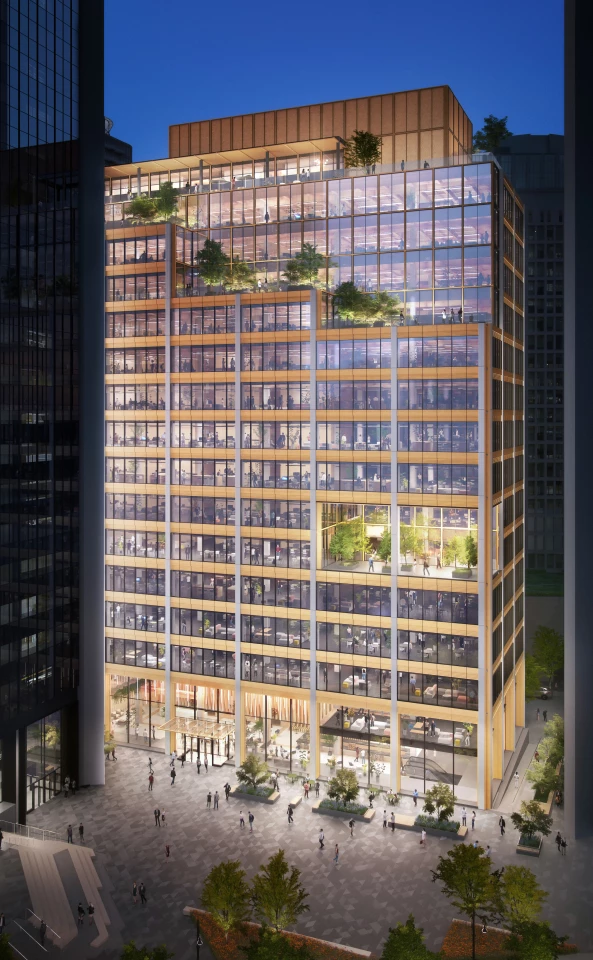Kohn Pedersen Fox Associates (KPF) is probably best known for designing many of the world's tallest and most impressive skyscrapers, including the Ping An Finance Centre and One Vanderbilt. Its latest project sees the firm swap the world of flashy steel and concrete supertalls for a modestly proportioned hybrid timber tower.
The tower, named Burrard Exchange, also involves Adamson Associates Architects, and is part of the ongoing Bentall Centre development in Vancouver, Canada.
Its height of 260 ft (almost 80 m) may not sound all that impressive, but it will be one of North America's tallest hybrid mass timber towers (that is, mostly made from engineered timber but with a concrete core housing the elevators and staircases). To put its height into perspective, Norway's Mjøstårnet is the world's tallest all-timber tower at 85.4 m (280 ft).
The building will feature a rectangular overall form, though it will be enlivened somewhat with multiple terrace areas planted with greenery. It will consist of 16 floors, most of which will be occupied by office space, but there will be some retail space on the lower floors too. Additionally, it will be topped by a rooftop conference area, with meeting spaces and outdoor seating. The interior decor will sensibly be designed to highlight the beauty of the wood, as well as ensuring ample natural light thanks to generous floor-to-ceiling glazing.

"Wood has a relatively low manufacturing carbon footprint compared to other materials and is the only material that can remove carbon from the atmosphere over the lifetime of its usage," explains Hudson Pacific Properties, which is developing Burrard Exchange with Blackstone Real Estate. "This project represents Hudson Pacific's first mass timber development and will build upon the momentum of other recently announced mass timber projects in British Columbia. As with the rest of Hudson Pacific's portfolio, upon delivery Burrard Exchange's building operations will be 100 percent carbon neutral."
Plans have been submitted to Vancouver city officials and assuming all goes well, construction is slated to begin in 2023. Indeed, Vancouver is poised to become something of a boom town for timber construction, and the city is also slated to receive timber towers from Perkins+Will and Shigeru Ban.
Source: KPF






